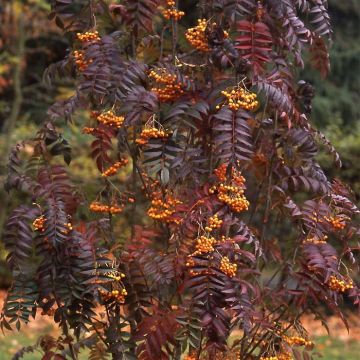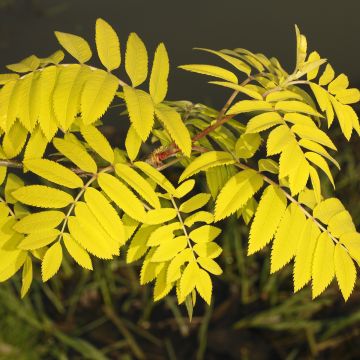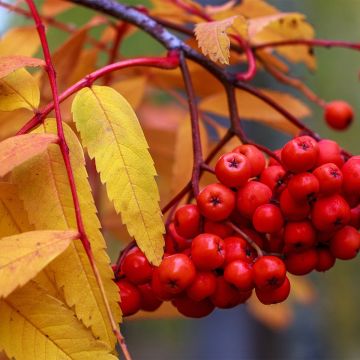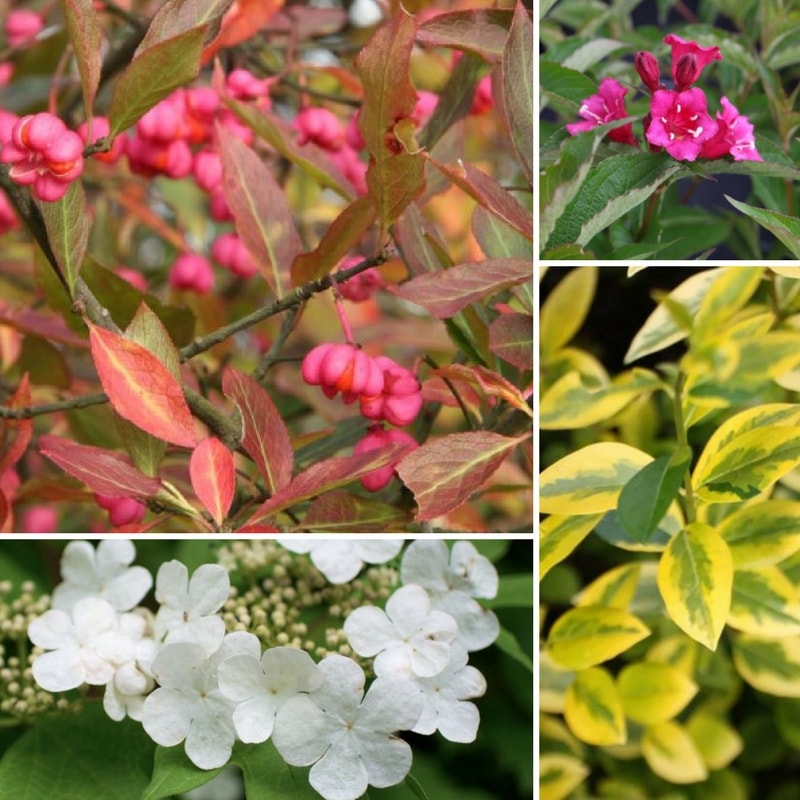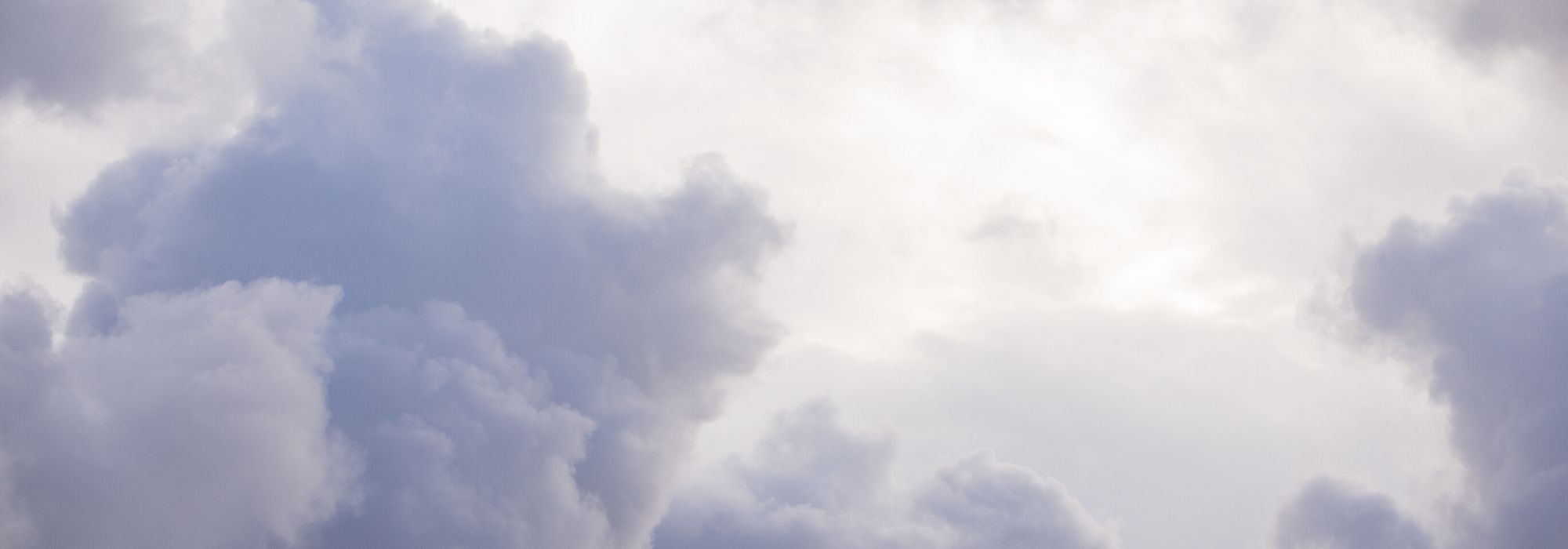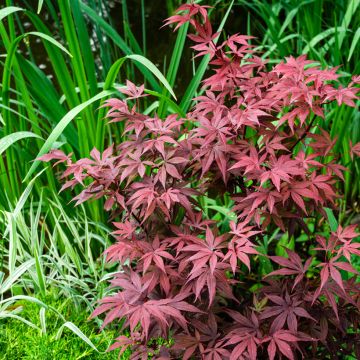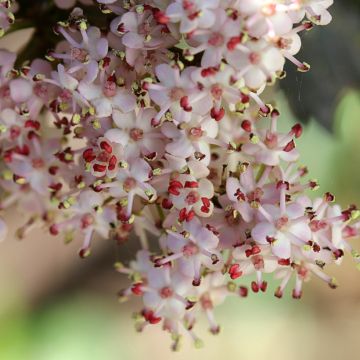

Sorbus aucuparia Fastigiata - Rowan


Sorbus aucuparia Fastigiata - Rowan
Sorbus aucuparia Fastigiata - Rowan
Sorbus aucuparia Fastigiata
Rowan, Mountain Ash, European Rowan
Special offer!
Receive a €20 voucher for any order over €90 (excluding delivery costs, credit notes, and plastic-free options)!
1- Add your favorite plants to your cart.
2- Once you have reached €90, confirm your order (you can even choose the delivery date!).
3- As soon as your order is shipped, you will receive an email containing your voucher code, valid for 3 months (90 days).
Your voucher is unique and can only be used once, for any order with a minimum value of €20, excluding delivery costs.
Can be combined with other current offers, non-divisible and non-refundable.
Home or relay delivery (depending on size and destination)
Schedule delivery date,
and select date in basket
This plant carries a 24 months recovery warranty
More information
We guarantee the quality of our plants for a full growing cycle, and will replace at our expense any plant that fails to recover under normal climatic and planting conditions.
Does this plant fit my garden?
Set up your Plantfit profile →
Description
Sorbus aucuparia 'Fastigiata' is a form of rowan tree with a fastigiate habit, narrower than that of the rowan found in the countryside. It is a small upright tree adorned with beautiful pinnate, green leaves, which take on warm yellow hues in autumn. It offers a spring flowering, white and honey-producing, followed by clusters of round, red berries that are appreciated by birds. It is very hardy and accommodating in terms of soil and climate.
The rowan tree, scientifically known as Sorbus aucuparia, can reach around fifteen metres in height, growing spontaneously in hedges, along pathways, or at the edges of woods. Its natural distribution area is remarkably vast as it covers a large part of Europe, Russia, temperate Asia, and extends to Japan. Its great hardiness and tolerance to many different natural conditions, whether in terms of soil or climate, explain its capacity for expansion. In the countryside, its berries serve as a larder for wild birds.
A member of the large family of Rosaceae, there are dozens of species of rowans, with Sorbus aucuparia being one of the most common.
Sorbus aucuparia 'Fastigiata' forms a small tree with an upright, narrow columnar habit, becoming more conical with age. At maturity, it reaches between 5 and 8 m in height with a spread of 2 m to 3.50 m. Its large odd-pinnate leaves are composed of 11 to 15 toothed, dull dark green leaflets. The flowering in white umbels of about 12 cm in diameter appears around May to June. It exudes a musky fragrance that attracts bees. The flowers then give way to heavy clusters of very decorative, bright red fruits, measuring 1 cm or more in diameter. They delight the birds that feed on them until around the end of the year. In autumn, the foliage takes on a yellow or even orange hue, depending on the situation.
This fastigiate rowan should be planted in non-scorching sunlight. This very cold-resistant small tree is undemanding in terms of soil. It can thrive in poor soil, which is moist but not too dry in summer.
This rowan tree 'Fastigiata' is suitable for modest or medium-sized gardens, but also for larger areas. It can be planted as a specimen tree, in a large shrub bed, or in front of a backdrop of taller trees. It pairs easily with shrubs such as Cotinus 'Royal Purple' with its purple foliage, the wayfaring tree (Viburnum lantana), melliferous, which boasts beautiful autumn foliage, and Rosa rugosa 'Hansa' which produces well-scented double purple flowers and decorative rose hips. Cornus sanguinea 'Magic Flame', with its fire-orange autumn colours and vividly coloured stems in winter, provides visual interest throughout the year. Finally, the European spindle tree (Euonymus europaeus 'Red Cascade'), adorned with pink and orange fruits and striking foliage at the end of the season, harmonises beautifully with the berries of the 'Fastigiata' rowan. When planted together, these shrubs create a dynamic and colourful scene that will enliven the garden in every season.
Sorbus aucuparia Fastigiata - Rowan in pictures
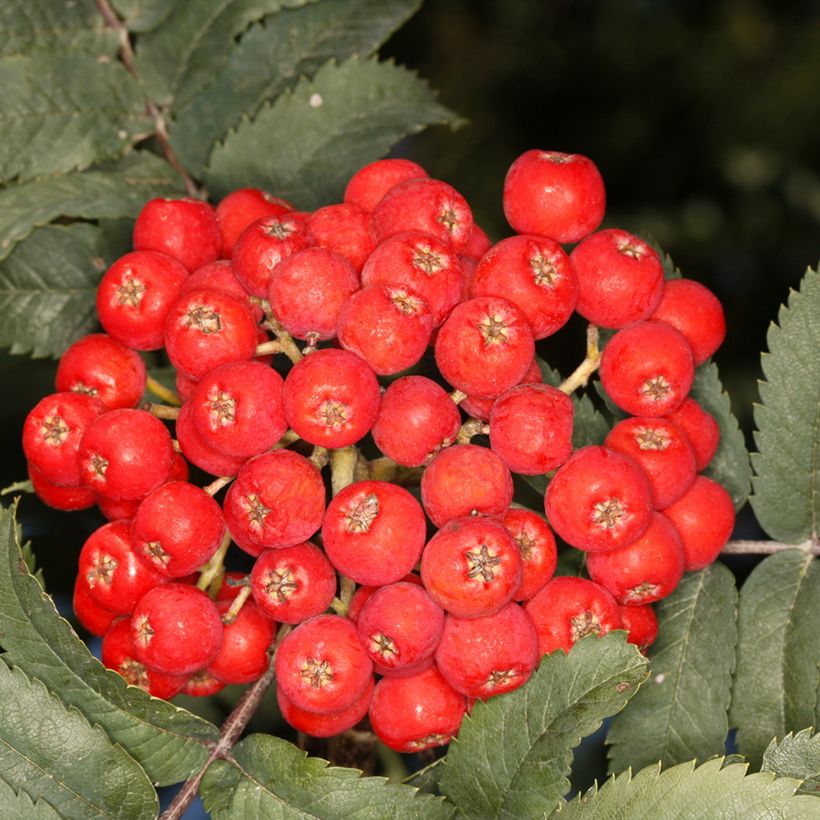

Plant habit
Flowering
Foliage
Botanical data
Sorbus
aucuparia
Fastigiata
Rosaceae
Rowan, Mountain Ash, European Rowan
Sorbus scopulina HORT., Sorbus americana 'Nana', Sorbus decora 'Nana', Sorbus decora var.grandmother
Cultivar or hybrid
Other Sorbus - Mountain Ash
View all →Planting and care
Sorbus aucuparia 'Fastigiata' is best planted in autumn in any soil, preferably moist (it tolerates dry conditions once well-rooted), slightly acidic, neutral, or slightly chalky. Not very demanding, it adapts to loamy, clayey, or sandy soils. Dig a planting hole 60 to 80 cm on each side and add a bit of compost to the bottom if the soil is poor. Soak the container in a bucket to thoroughly moisten the root ball before placing it in the planting hole. Backfill and water generously; monitor watering during the first two years to allow the tree to establish well.
It thrives in partial shade or non-scorching sunlight in northern regions, and has no particular requirements.
Planting period
Intended location
Care
Planting & care advice
This item has not been reviewed yet - be the first to leave a review about it.
Similar products
Haven't found what you were looking for?
Hardiness is the lowest winter temperature a plant can endure without suffering serious damage or even dying. However, hardiness is affected by location (a sheltered area, such as a patio), protection (winter cover) and soil type (hardiness is improved by well-drained soil).

Photo Sharing Terms & Conditions
In order to encourage gardeners to interact and share their experiences, Promesse de fleurs offers various media enabling content to be uploaded onto its Site - in particular via the ‘Photo sharing’ module.
The User agrees to refrain from:
- Posting any content that is illegal, prejudicial, insulting, racist, inciteful to hatred, revisionist, contrary to public decency, that infringes on privacy or on the privacy rights of third parties, in particular the publicity rights of persons and goods, intellectual property rights, or the right to privacy.
- Submitting content on behalf of a third party;
- Impersonate the identity of a third party and/or publish any personal information about a third party;
In general, the User undertakes to refrain from any unethical behaviour.
All Content (in particular text, comments, files, images, photos, videos, creative works, etc.), which may be subject to property or intellectual property rights, image or other private rights, shall remain the property of the User, subject to the limited rights granted by the terms of the licence granted by Promesse de fleurs as stated below. Users are at liberty to publish or not to publish such Content on the Site, notably via the ‘Photo Sharing’ facility, and accept that this Content shall be made public and freely accessible, notably on the Internet.
Users further acknowledge, undertake to have ,and guarantee that they hold all necessary rights and permissions to publish such material on the Site, in particular with regard to the legislation in force pertaining to any privacy, property, intellectual property, image, or contractual rights, or rights of any other nature. By publishing such Content on the Site, Users acknowledge accepting full liability as publishers of the Content within the meaning of the law, and grant Promesse de fleurs, free of charge, an inclusive, worldwide licence for the said Content for the entire duration of its publication, including all reproduction, representation, up/downloading, displaying, performing, transmission, and storage rights.
Users also grant permission for their name to be linked to the Content and accept that this link may not always be made available.
By engaging in posting material, Users consent to their Content becoming automatically accessible on the Internet, in particular on other sites and/or blogs and/or web pages of the Promesse de fleurs site, including in particular social pages and the Promesse de fleurs catalogue.
Users may secure the removal of entrusted content free of charge by issuing a simple request via our contact form.
The flowering period indicated on our website applies to countries and regions located in USDA zone 8 (France, the United Kingdom, Ireland, the Netherlands, etc.)
It will vary according to where you live:
- In zones 9 to 10 (Italy, Spain, Greece, etc.), flowering will occur about 2 to 4 weeks earlier.
- In zones 6 to 7 (Germany, Poland, Slovenia, and lower mountainous regions), flowering will be delayed by 2 to 3 weeks.
- In zone 5 (Central Europe, Scandinavia), blooming will be delayed by 3 to 5 weeks.
In temperate climates, pruning of spring-flowering shrubs (forsythia, spireas, etc.) should be done just after flowering.
Pruning of summer-flowering shrubs (Indian Lilac, Perovskia, etc.) can be done in winter or spring.
In cold regions as well as with frost-sensitive plants, avoid pruning too early when severe frosts may still occur.
The planting period indicated on our website applies to countries and regions located in USDA zone 8 (France, United Kingdom, Ireland, Netherlands).
It will vary according to where you live:
- In Mediterranean zones (Marseille, Madrid, Milan, etc.), autumn and winter are the best planting periods.
- In continental zones (Strasbourg, Munich, Vienna, etc.), delay planting by 2 to 3 weeks in spring and bring it forward by 2 to 4 weeks in autumn.
- In mountainous regions (the Alps, Pyrenees, Carpathians, etc.), it is best to plant in late spring (May-June) or late summer (August-September).
The harvesting period indicated on our website applies to countries and regions in USDA zone 8 (France, England, Ireland, the Netherlands).
In colder areas (Scandinavia, Poland, Austria...) fruit and vegetable harvests are likely to be delayed by 3-4 weeks.
In warmer areas (Italy, Spain, Greece, etc.), harvesting will probably take place earlier, depending on weather conditions.
The sowing periods indicated on our website apply to countries and regions within USDA Zone 8 (France, UK, Ireland, Netherlands).
In colder areas (Scandinavia, Poland, Austria...), delay any outdoor sowing by 3-4 weeks, or sow under glass.
In warmer climes (Italy, Spain, Greece, etc.), bring outdoor sowing forward by a few weeks.

































